The strict definition of fiber-reinforced composites is polymer composites, which comprise the fiber array and the polymer matrix. The main function of fibers is generally to increase the strength and stiffness of composites, and the function of polymer matrix is to bind fibers together and to protect fibers from being damaged, and to increase toughness and resistance to corrosion and heat. Depending on the polymer matrix, fiber reinforced composites can be either thermoset or thermoplastic. Thermoset materials such as epoxy and polyurethane (PU) were favored for its mechanical properties. In recent years, however, due to the need for light-weight and high-performance materials to meet environmental regulations requirements and shorter manufacturing time, thermoplastic materials, such as polypropylene (PP), polyamide (PA), are becoming more popular and are gradually replacing thermoset materials. Both thermoset and thermoplastic fiber reinforced composites, plates of composites are made first such as SMC, BMC, GMT or prepreg, and then compressed to form the shape of product.
Compression molding is a high-volume and high-pressure method for manufacturing; especially for irregular-shaped products made of high strength fiber reinforced composites, and is also widely used for producing automotive parts, such as bumpers, engine covers, spoilers and other complex and tiny parts. The process of compress molding begins with placing preheated material on the cavity and then compressed by the core side of the mold to deform and occupy the cavity. The compression pressure maintains high until the product solidify. The mold then is opened and the product is removed. Comparing with resin transfer molding or injection molding, the advantage of compressive molding is low cost for huge and complex products due to the wasted material is less. Hence, it is also suitable for high priced materials. Besides, the pressure distribution of the product would be more even. However, its’ disadvantages are the consistence of manufacture, difficulty of controlling flash. Hence, not all of products are suitable for compression molding. In addition to quality specification, process conditions will generally pay attention to several points: 1) amount of materials needed 2) appropriate heating or cooling 3) compression force required 4) compression time. Excessive materials will cause difficulties to compression and serious flash problem. Shortage of materials will result in product defect or warpage. Improper heating or cooling design makes molding cycle too long and lack of compression force or time may result in improper product dimension.
Moldex3D Compression Molding solution can automatically generates compression zone and completes the compression condition setting simply through the Process Wizard (shown in Fig.1 and Fig.2). Compression Molding module also provides complete analysis results through 3D simulation and visualization technologies that real experiments are difficult to observe as in Fig.3. What’s more, Moldex3D Compression Molding module also offers compression force response, temperature and pressure distribution results (shown in Fig. 4 and Fig. 5) that help fiber reinforced composites products further obtain process parameter optimization.
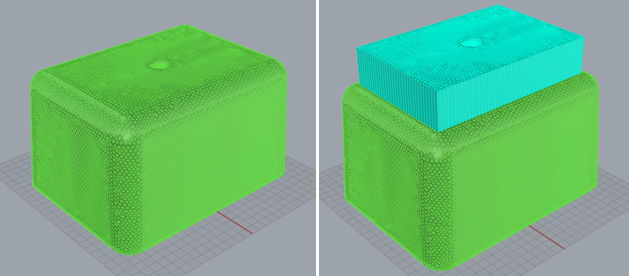 Fig. 1 Part and compression zone
Fig. 1 Part and compression zone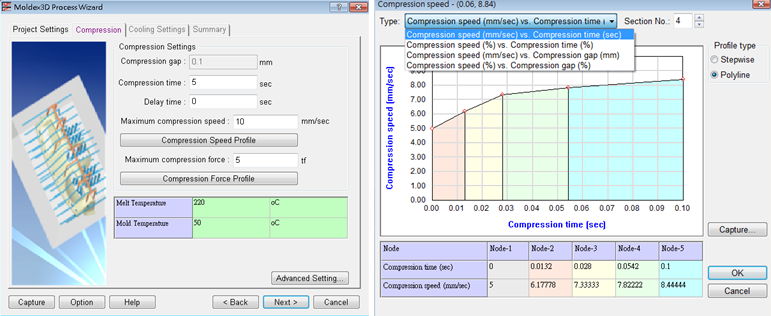
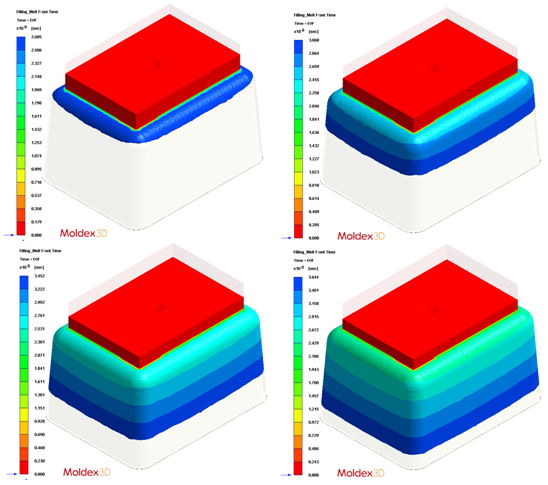 Fig. 3 Melt front time history
Fig. 3 Melt front time history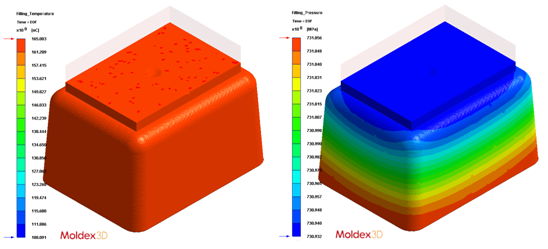 Fig. 4 Temperature and pressure distribution
Fig. 4 Temperature and pressure distribution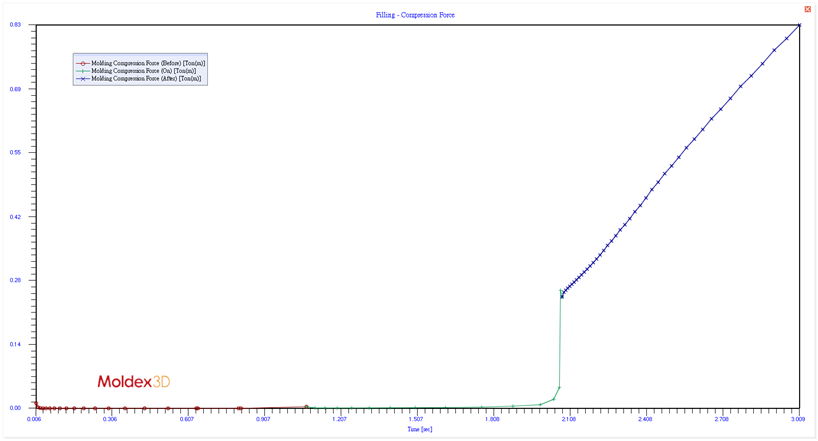 Fig. 5 Compression force response
Fig. 5 Compression force response